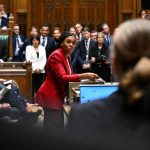DigitalStorm via Getty Images
- The money is supposed to publicly fund presidential campaigns. But it doesn’t.
- Republicans and Democrats in Congress can’t agree on what to do with the ever-growing pot.
- Charities told Insider the money could do great good for suffering Americans.
- See more stories on Insider’s business page.
Holed away in a government account is a massive cash stash most anyone — from depleted federal programs to coronavirus-throttled charitable causes — would love to tap.
But it sits idle and untouched.
The intended beneficiaries of the taxpayer-fueled Presidential Election Campaign Fund — presidential candidates — don’t want it, as they’re soured by its restrictions on their election fundraising and spending.
Other prospective recipients, meanwhile, can’t have it.
Congress is what’s preventing this. Conservatives would prefer to disband the fund and repurpose its money. Many Democrats want the money to seed a reimagined public campaign-finance program contained within a broader “democracy-reform” agenda that’s hamstrung on Capitol Hill. Neither side will budge.
Meanwhile, the Presidential Election Campaign Fund’s pot had topped more than $404.2 million as of December 31 — a record amount during the fund’s nearly 50-year history, according to US Treasury records reviewed by Insider.
The fund grew by $1.74 million from November 1 to December 31 alone, according to federal records.
If current trends continue, the fund will continue to grow each month by six- or seven-figures thanks to the financial heft generated by American taxpayers who check that little box on their annual tax return that directs $3 to the fund.
‘Help people and communities recover’
In a year when lawmakers are measuring economic relief and infrastructure bills in the trillions of dollars, a few hundred million deserted federal greenbacks may seem comparatively paltry.
But some charitable organizations that serve people often possess next to nothing. Several nonprofit leaders told Insider that Congress could use the Presidential Election Campaign Fund money to immediately ease suffering.
“The best possible use of $400 million would be to provide funds for charities to help people and communities recover,” Steve Taylor, United Way Worldwide‘s senior vice president and counsel for public policy, said, citing a looming eviction crisis, a burdened childcare system, education challenges, and mental-health needs among urgent pandemic-era problems. “Charities are leading the way in addressing these problems, and $400 million in new funding would be a game changer.”
While the federal government has directed significant funding toward its COVID-19 response, the pandemic is far from over, and people around the world will endure its aftereffects for a long while, said Judy Monroe, the president and CEO of the CDC Foundation, an independent nonprofit that supports the Centers for Disease Control and Prevention’s health-protection work.
“Additional federal funds that are not actively being utilized could, as deemed appropriate by Congress, be repurposed and brought to bear to address critical needs from COVID-19 to health inequities to strengthening the nation’s public-health system to be prepared for the next, inevitable outbreak,” Monroe told Insider.
Erika Cotton Boyce, a Habitat for Humanity spokesperson, declined to speak specifically about the Presidential Election Campaign Fund but broadly said Congress should “find resources to fund critical programs that will address housing supply and housing affordability, especially homeownership programs for low-income families.”
Congress has various mechanisms for directing public funding to nonprofit entities. A bill introduced this year by Sen. Amy Klobuchar, a Minnesota Democrat, hopes to further help charitable nonprofits “provide services to meet the increasing demand in community needs caused by the coronavirus pandemic, preserve and create jobs in the nonprofit sector, reduce unemployment, and promote economic recovery.”
Andrew Harnik-Pool/Getty Images
Debt reduction, pediatric care, Alzheimer’s research
Some lawmakers and special-interest advocates have other designs on the $404 million.
During the 2019-20 congressional session, two Republican lawmakers sponsored similar bills that attempted to kill the Presidential Election Campaign Fund.
Rep. Tom Cole of Oklahoma sought to transfer the campaign fund’s cash balance to a pediatric-research initiative administered by the National Institutes of Health.
Sen. Joni Ernst of Iowa, meanwhile, wanted the money sent to the US Treasury’s general fund and used to help reduce the federal budget deficit.
Neither bill received a hearing, let alone a vote.
In September, Ernst tried again with a similar bill that so far has garnered little support.
That’s a shame, said Joshua Sewell, a senior policy analyst at the nonpartisan Taxpayers for Common Sense who deemed the campaign fund “a vestige of a bygone era.” He recommended its money be used to help pay down the country’s national debt, which stood at more than $28.5 trillion as of June, according to the Treasury Department.
Bradley Smith, a former Federal Election Commission chairman who now leads the nonprofit Institute for Free Speech, said Congress should repeal the law establishing the fund and direct its money to the Treasury’s general fund.
Cole plans to reintroduce a new bill targeting the presidential fund, he told Insider. And he’s open to broadening where the $404 million might go.
“If the money were to be redirected somewhere other than pediatric-disease research, Alzheimer’s research would certainly be a worthy cause,” Cole said.
Resist and reform
Congressional Democrats this year made voting, ethics, and campaign-finance reform a chief priority, which is enshrined in bills known as HR 1 and S 1 — colloquially, the “For the People Act of 2021.”
A historically robust public financing system for federal elections is part of the For the People Act.
But Senate Republicans filibustered the For the People Act, effectively killing it. Democrats then floated a similar, but slimmed-down bill called the “Freedom to Vote Act,” which does not include strong public financing language.
Supporters of publicly funded campaigns say this is no time to give up — or to give away $400 million that’s already earmarked and available for the public financing of elections.
The For the People Act “represents the boldest democracy reform since Watergate, and any funds currently available for the old system should be used for the new system of federal citizen-funded elections, which must pass so we can get big money out of politics,” Beth Rotman, the director of money in politics and ethics for Common Cause, said prior to the bill’s stall-out.
“Getting rid of the money at this point would send the wrong signal,” said Meredith McGehee, the former executive director of the nonprofit group Issue One, a self-described “crosspartisan movement for political reform.”
The pro-Democrat organization End Citizens United, which takes its name from the Supreme Court’s 2010 decision that unleashed gushers of new political money into elections, also backed keeping the cash in place.
“The existing presidential system was designed following Watergate for anti-corruption purposes,” the group’s spokesperson Bawadden Sayed said, “and we would be supportive of potentially using it for future anti-corruption purposes.”
Elijah Nouvelage/AFP via Getty Images
Thanks, Obama?
Public presidential-campaign funding wasn’t always so derelict.
From the late 1970s to the late ’90s, the Presidential Election Campaign Fund enjoyed a heyday, distributing eight or nine figures of public money to candidates each election cycle.
Supporters lauded the program as an elixir to big-money politics and a defense against corruption. Candidates from both parties routinely opted to use it. Doing so allowed them to spend less time fundraising and more time campaigning.
And since both sides participated, neither side engaged in the kind of political money arms races emblematic of contemporary presidential elections.
But the détente wouldn’t last.
Citing financial advantages, George W. Bush rejected public matching funds during the 2000 Republican presidential primary. Both Bush and eventual Democratic nominee John Kerry declined public funding in their 2004 presidential primaries.
Come 2008, Democrat Barack Obama rendered the Presidential Election Campaign Fund functionally obsolete by becoming the first major-party presidential candidate in post-Watergate politics to reject public funding during a general presidential election.
Obama even broke a campaign promise to do so — he previously said he’d use public funding. The future president knew he could privately raise and spend hundreds of millions of dollars more than the public program would afford him. Republican presidential nominee John McCain accepted public money — and lost.
No Democratic or Republican presidential nominee has since used public funding. Only a smattering of minor-party and longshot Democratic-primary candidates have patronized the Presidential Election Campaign Fund, who drew about $3 million combined since the 2012 race.
The fund didn’t distribute a single dollar to any presidential candidate during the 2020 presidential election.
It last provided funding to presidential nominating conventions in 2012, as Congress two years later passed, and Obama signed, a law that axed public funding of conventions.
Congress siphoned tens of millions of dollars from the presidential fund that otherwise would have gone to party conventions to a pediatric-research fund — the same one that Cole, the Oklahoma congressman, wants to fill with the account’s full balance.
Until that or any other repurposing decision comes down, the FEC continues to spend taxpayer resources keeping the Presidential Election Campaign Fund alive.
The agency’s audit division has administrative, oversight, and enforcement responsibilities over the program, Judith Ingram, an FEC spokesperson, said. The independent, bipartisan FEC, which regulates and enforces the nation’s campaign-finance laws, employs about 300 people.
Its projected 2022 budget is about $76.5 million, meaning the balance of the Presidential Election Campaign Fund could theoretically fund the agency for a full five years.
This article was originally published on July 13, 2021, and has since been updated to include new financial data and legislative developments.
Powered by WPeMatico






